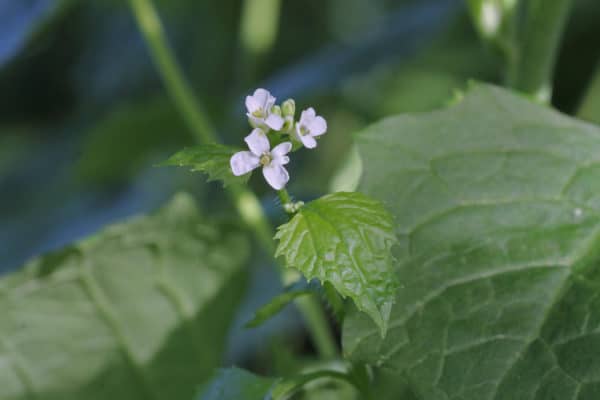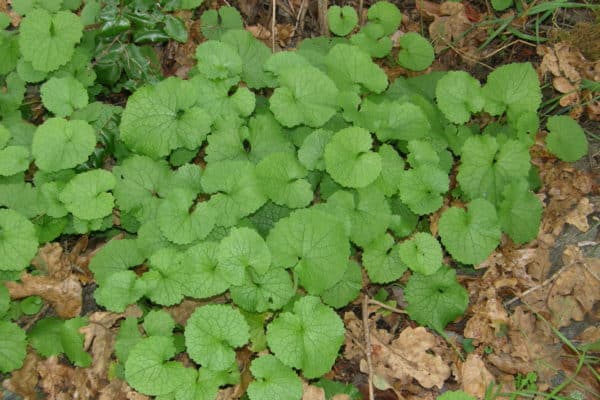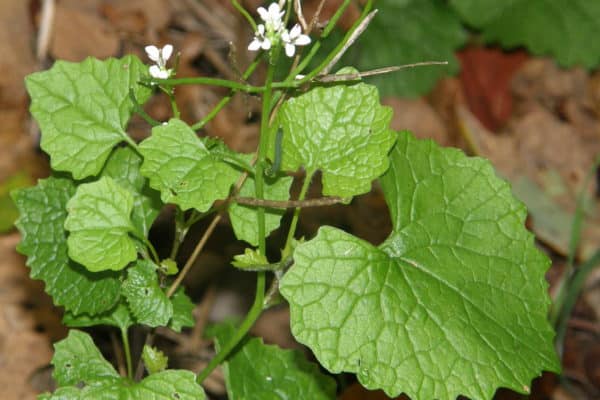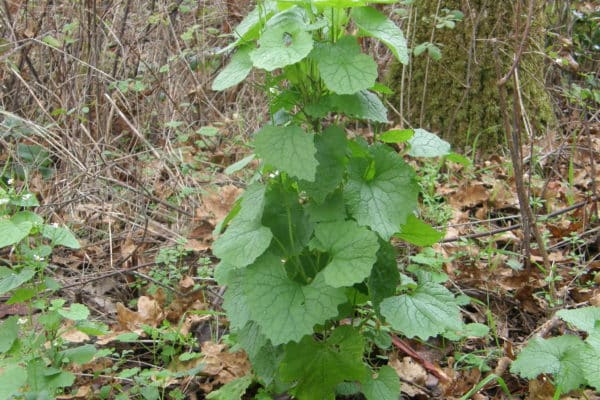Garlic mustard
About This Species
Garlic mustard is a biennial plant – in the first year, plants appear as a rosette of green leaves close to the ground; these rosettes remain green through the winter and develop into mature flowering plants the following spring. It is believed it was intentionally introduced to North America from Europe as a medicinal and food plant. It can be found growing in disturbed ecosystems, or in forest understories as it is a shade-tolerant plant. It reproduces by seed only and is unpalatable for herbivore grazers. It grows from a long white taproot that smells like horseradish. Garlic mustard is designated as a Provincial Noxious Weed by the BC Weed Control Act, as well as a Provincial Containment species by the BC Provincial Priority Invasive Species List.
How to Identify
Garlic mustard is biennial plant that can grow from 30–100 cm (rarely to 130 cm) tall.
Flowers are small and white with 4 petals arranged in a cross-like shape. The fruit is a pod containing 2 rows of shiny black seeds.
The leaves are stalked, triangular to heart-shaped, 10–15 cm long and 5–9 cm wide, with a coarsely toothed margin (like a saw’s edge).

Take Action
Prevent the spread of garlic mustard by brushing off your shoes, clothing, and any recreational equipment prior to leaving areas infested with Garlic mustard. Smaller patches of garlic mustard can be hand-pulled. If the infestation is larger, regular mowing can help control the population.
-
If you need advice about invasive species on your property or you are concerned about reported invasives in your local area, contact your local government or regional invasive species organization.

PlayCleanGo
Learn about best practices
REPORT TO PROTECT BC’S BIODIVERSITY

Use the app
Observe and report to protect BC’s biodiversity

Report through this website
Use our form to tell us what you’re seeing and where.



















